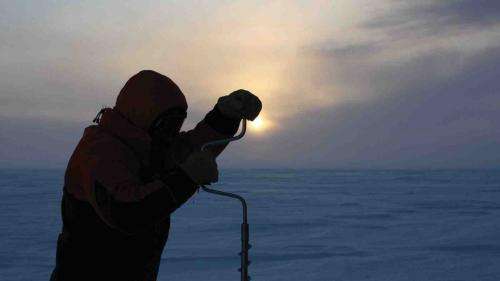Dr Andrew Martin, from the School of Biological Sciences, has spent over a decade investigating microalgae and bacteria that live in the bottom layers of sea ice in Antarctica to understand how microbes might be affected by climate change.
Dr Martin and Dr Ken Ryan, also from the School of Biological Sciences, have set up incubation experiments that model future climate conditions, to explore how the bottom of the food chain will fare as sea ice continues to melt. Initial findings show that microbes are relatively robust to environmental change.
In one experiment, light-dependant microalgae that normally grow at minus two degrees Celsius, were incubated in the dark at four degrees. "They were completely fine. It was only when we got to unrealistic temperatures of 10 degrees that we saw a decline in performance."
Microbes are crucial to the survival of many species, says Dr Martin, because they provide the start to the food chain in the ocean.
"Penguins, whales and seals make up very little of the overall organic matter in the ocean," says Dr Martin. "If you took everything out of the Southern Ocean and put it on scales, 95 percent would be microbes."
Although algae are extremely tolerant of various stressors, Dr Martin says human impact on the environment and increased amounts of carbon dioxide in the atmosphere will make these conditions more challenging.
"We know there will be less sea ice in the future, and that may actually lead to more microbes in the open water. Although there'll potentially be a larger food resource, it won't be concentrated. In Antarctica it's all about aggregations—if a food resource isn't easily accessible, an ecosystem can become unbalanced."
Dr Martin says that microbial tolerance to environmental stress is impressive. Exactly how that's going to affect the future for Antarctic wildlife is a far greater mystery.
Provided by Victoria University
























